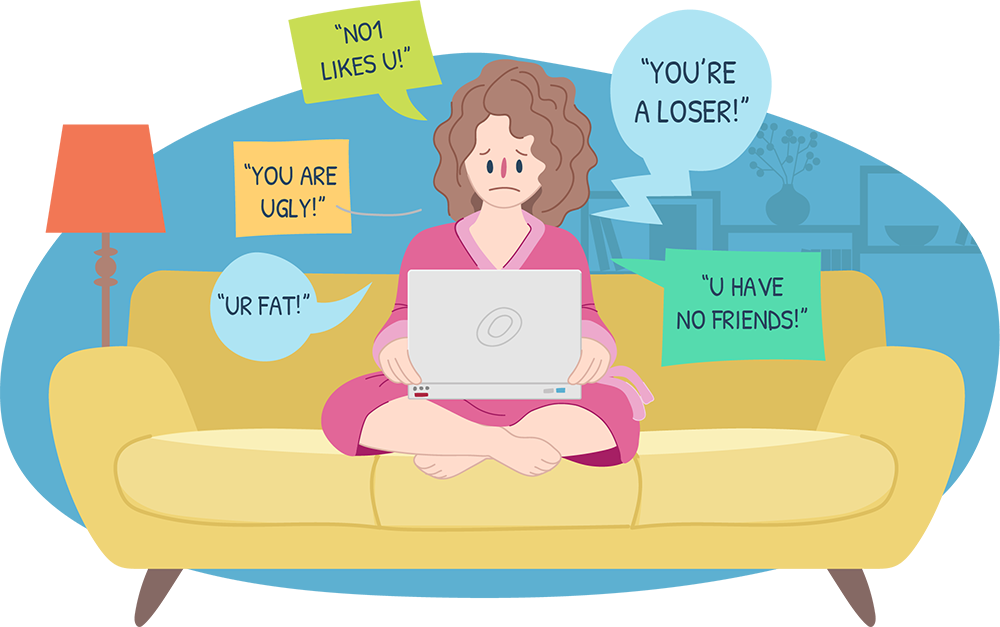Cyberbullying: On the Rise

March 3, 2020
Mallory began middle school as a well-rounded, cheerful girl. She was thriving in life through gymnastics and cheerleading, and showed much dedication as a student. Mallory spent her days playing with her sister and her dogs or jumping on the trampoline living the happy life a 6th-grader should be living. However, things began to change as fellow peers began to make fun of her and her body at recess. The subtle digs at Mallory progressed to excessive and harsh cyberbullying over the course of nine months. Mallory’s peers posted pictures of her simply walking by herself with heinous captions aimed at Mallory’s body and social status. On June 14th, 2017, Mallory’s parents found their sweet, loving daughter hanging in her bedroom closet. Mallory was twelve years old when she took her own life.
This incident is only one of many contributing to the rise in teenage depression and suicide. Why is the rate rising? The answer is most likely charging on your bedside or vibrating in your pocket. Social media platforms have transformed throughout the last two decades, allowing the youth to practically live their lives through pictures, videos, and tweets. People from anywhere around the world are now able to communicate at the swipe of a finger or click of a mouse. The benefits of social media are certainly an amazing thing for mankind; however, the drawbacks can be harsh and sadly life-changing.

Although social media provides important benefits for many people, it also contributes a critical amount to mental issues such as moderate to severe depression and anxiety in teenagers. The latest federal report from the National Center for Education Statistics suggests that cyberbullying is currently on the rise, and the effects are not good. The report informs that online bullying has increased in youth about 3.5% since the 2014-2015 school year. This increase has been attributed to the increase of depression and suicidal thoughts among teens as students are exposed to so much content on social media. What is even more concerning is the size of the population of students that are involved in cyberbullying. According to the i-SAFE Foundation, “Over half of adolescents and teens have been bullied online, and about the same number has engaged in cyberbullying.” With the massive percentage of teens already involved in cyberbullying, as well as the rates rising, the need for action is severe and necessary. Social media provides endless outlets for teens to ruin and tarnish each other’s lives without even glancing at one another.
For a more personal opinion, I interviewed a high school guidance counselor to seek out additional information or concerns on the topic. Mrs. Patricia Sabol is a guidance counselor at Quakertown Community High School, and she deals with students and their issues from day to day. When asked about her personal experiences with cyberbullying as a high school student, she explained that there was very little or no bullying because social media was not even a thing yet. This really vocalizes the idea that depression and suicide rates have risen because of the expansion in social media industries. I then asked her about her thoughts on social media’s limits as a whole. “It’s like anything else, if used in the wrong way, social media is a weapon,” says Mrs. Sabol. Her main point being that students are using social media on such advanced levels, teaching them the wrong way to deal with issues in reality. Lastly, when asked about possible solutions to the growing epidemic, Mrs. Sabol had an intriguing response. “Education,” she says, meaning students need a clear and solid presentation about the true ramifications of cyberbullying for both the bully and the victim. Students view and send graphic images and messages on their phones everyday, unaware of how hurtful the outcome is or how seriously they could be punished. Mrs. Sabol generalizes that the youth are fragile creatures and need to be informed of how tragic and heart-breaking the repercussions of cyberbullying can be.
This epidemic shows no evidence of an upcoming end, and in fact, it is on the rise in most parts of the country. As a member of the new generations, myself and others from all over need to contrive a system to act on cyberbullying, and I believe education on the matter is key for change in this matter. Overall, social media has so many limits and those limits can be life-changing for some. Ending on a solid note, Mrs Sabol had this to say, “There is too much power and control that kids have, and it can be so easily done. One image, one word can send one person over the edge, just like that.”



